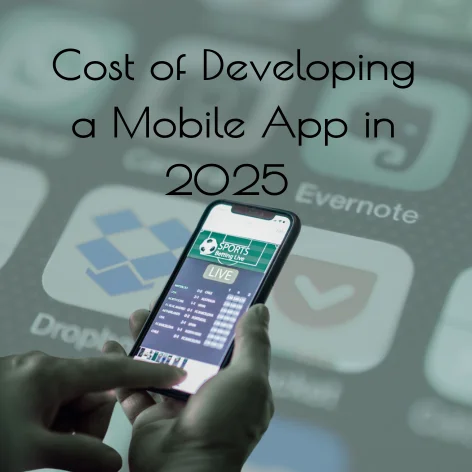The New Era of AI in 2025: From Gemini 3 to Creative AIs
Learn about the best AI tools for 2025, including Nano...
We use cookies for our website to give you the most relevant experience by remembering your preferences. By clicking “accept”, you consent to use of ALL the cookies
This website uses cookies to improve your experience while you navigate through the website. Out of these, the cookies that are categorized as necessary are stored on your browser as they are essential for the working of basic functionalities of the website. We also use third-party cookies that help us analyze and understand how you use this website. These cookies will be stored in your browser only with your consent. You also have the option to opt-out of these cookies. But opting out of some of these cookies may affect your browsing experience.
Necessary cookies are absolutely essential for the website to function properly. These cookies ensure basic functionalities and security features of the website, anonymously.
| Cookie | Duration | Description |
|---|---|---|
| cookielawinfo-checkbox-functional | 11 months | This cookie is set by GDPR Cookie Consent plugin. The cookie is used to store the user consent for the cookies in the category “Analytics”. |
| cookielawinfo-checkbox-functional | 11 months | The cookie is set by GDPR cookie consent to record the user consent for the cookies in the category “Functional”. |
| cookielawinfo-checkbox-necessary | 11 months | This cookie is set by GDPR Cookie Consent plugin. The cookies is used to store the user consent for the cookies in the category “Necessary”. |
| cookielawinfo-checkbox-others | 11 months | This cookie is set by GDPR Cookie Consent plugin. The cookie is used to store the user consent for the cookies in the category “Other. |
| cookielawinfo-checkbox-performance | 11 months | This cookie is set by GDPR Cookie Consent plugin. The cookie is used to store the user consent for the cookies in the category “Performance”. |
| viewed_cookie_policy | 11 months | The cookie is set by the GDPR Cookie Consent plugin and is used to store whether or not user has consented to the use of cookies. It does not store any personal data. |
Functional cookies help to perform certain functionalities like sharing the content of the website on social media platforms, collect feedbacks, and other third-party features.
Performance cookies are used to understand and analyze the key performance indexes of the website which helps in delivering a better user experience for the visitors.
Analytical cookies are used to understand how visitors interact with the website. These cookies help provide information on metrics the number of visitors, bounce rate, traffic source, etc.
Advertisement cookies are used to provide visitors with relevant ads and marketing campaigns. These cookies track visitors across websites and collect information to provide customized ads.
Other uncategorized cookies are those that are being analyzed and have not been classified into a category as yet.
Cyberia Tech, Inc. respects your privacy. This Privacy Policy explains how we collect, use, and share your information. By using our services, you agree to this policy. If any other agreements conflict with this Privacy Policy, the terms of those agreements prevail.
Cyberia Tech complies with the EU-US and Swiss-US Privacy Shield Frameworks for handling personal data from the EEA, UK, and Switzerland. In case of any conflict, the Privacy Shield Principles prevail. Learn more at Privacy Shield. Key Definitions
Information linked to an individual, transferred from the EEA, UK, or Switzerland to the U.S.
Data revealing race, religion, health, sexual orientation, and similar categories.
Effective Date: [ 2025 / 12 / 12 ]
Welcome to The Cyberia Tech ! By accessing or using our website or services, you agree to
comply with and be bound by these Terms of Use and our Privacy Policy. If you do not agree with
these terms, please do not use our Services.
Loading
0 %

In a world where nearly everything is driven by technology, mobile apps have become indispensable. They allow businesses to connect with customers, improve services, and streamline operations. Whether you’re a startup looking to launch the next big thing, or an established enterprise aiming to improve your digital presence, one question will inevitably arise: What is the cost of developing a mobile app in 2025?
The answer to this question isn’t as simple as a flat number, as several factors affect the cost of developing a mobile app in 2025. However, understanding these costs is crucial if you’re planning to make the leap into the mobile app market. In 2025, the price of developing a mobile app has evolved due to technological advancements, shifting market dynamics, and changes in user expectations. This article will delve deep into the components that determine the cost of developing a mobile app in 2025, and why it’s more important than ever to carefully plan your app development strategy.

The cost of developing a mobile app in 2025 is determined by a variety of factors. The type of app, the platform it will run on, and the complexity of the app are just a few of the considerations that directly affect the final price. Mobile app development has come a long way since the early days of app stores, and today’s developers face an entirely different set of challenges.
To begin with, platform choice plays a major role in determining development costs. Building an app for one platform—iOS or Android—will cost less than creating a cross-platform app. However, the choice of platform is just the beginning. The complexity of the app also significantly impacts costs. Apps with basic functionality, like to-do lists or weather apps, cost significantly less to develop compared to apps with high-level functionalities such as real-time communication features, GPS services, or advanced artificial intelligence integration.
Another major factor to consider is design complexity. Apps that prioritize user experience (UX) and user interface (UI) design require extensive time and expertise. In 2025, users expect apps to look and feel polished, intuitive, and aesthetically pleasing. If your app needs customized designs, it will require more work and thus, incur a higher cost of developing a mobile app in 2025.
The development team and their geographical location also influence costs. Rates for app developers can vary widely depending on where they’re based. For instance, hiring developers in North America or Western Europe can cost significantly more than outsourcing to developers in Eastern Europe or Asia. Additionally, the skill level and experience of the development team play a significant role in pricing. Highly experienced developers or development firms will charge more, but they often offer higher-quality results that can reduce future costs associated with bugs, maintenance, and updates.

The cost of developing a mobile app in 2025 will vary depending on the app’s type. Below is a look at the three main types of apps and their associated costs.
In 2025, technology continues to evolve at a rapid pace, with new tools and frameworks that streamline mobile app development. While these advancements can help reduce development time and costs in some areas, they can also introduce new challenges.
For example, the increasing use of artificial intelligence in mobile apps is driving up the cost of developing a mobile app in 2025. AI can improve user experience by offering personalized recommendations, voice recognition, and advanced analytics. However, implementing AI into an app requires specialized skills and tools, which can significantly increase the cost of developing a mobile app in 2025.
Another emerging trend is Augmented Reality (AR) and Virtual Reality (VR), both of which have the potential to make apps more interactive and immersive. However, building AR or VR capabilities requires additional development time, specialized hardware, and advanced graphics, which can increase the cost of developing a mobile app in 2025 substantially.
Additionally, 5G technology is expected to play a crucial role in mobile app development by offering faster download speeds and lower latency. Apps that take advantage of 5G capabilities, such as real-time streaming or remote operations, will require significant adjustments to their infrastructure. This will impact the overall cost of developing a mobile app in 2025, as new technologies come with both implementation challenges and opportunities.

It’s important to understand that the cost of developing a mobile app in 2025 doesn’t stop once the app is launched. After launch, apps require ongoing maintenance, updates, and bug fixes to ensure they continue to function smoothly and meet user expectations.
Typically, mobile app developers estimate that annual maintenance will cost around 15-20% of the original development cost. This means that if you spent $100,000 developing your app, you should expect to spend an additional $15,000 to $20,000 per year on maintenance. This covers tasks like bug fixes, server costs, and minor updates to keep the app compatible with new devices and operating system versions.
Additionally, major updates, which introduce new features or design changes, will come at a higher cost. In many cases, these updates will require a new round of design, development, and testing, which can be a significant financial commitment.
For businesses and individuals looking for affordable mobile app development in 2025, it’s important to choose the right development team and strategy. Outsourcing to regions with lower labor costs, such as Eastern Europe or Asia, can help significantly reduce app development expenses without sacrificing quality. However, it’s essential to carefully vet developers and ensure they have the necessary skills to deliver a high-quality product.
The geographical location of the development team plays a major role in determining the cost of developing a mobile app in 2025. Here’s a quick breakdown of how costs compare across different regions:

What factors influence the cost of developing a mobile app in 2025?
The cost of developing a mobile app in 2025 is influenced by several factors, including the type of app, the platform (iOS or Android), the complexity of features, design requirements, and the location of the development team. The more complex the app (e.g., incorporating AI, AR/VR, or 5G functionality), the higher the development cost. Additionally, ongoing maintenance and updates also contribute to the overall cost.
How much does it cost to develop a mobile app in 2025?
The cost of developing a mobile app in 2025 varies depending on the app’s complexity. Basic apps typically cost between $10,000 and $50,000, mid-level apps range from $50,000 to $150,000, and complex apps can exceed $150,000. The final price is determined by factors such as design, functionality, and the expertise of the development team.
What is the difference between developing an app for one platform versus cross-platform?
Developing an app for a single platform (iOS or Android) generally costs less than developing a cross-platform app. Cross-platform apps, which work on both iOS and Android, require more time and resources to ensure compatibility, leading to higher development costs. The choice between one or multiple platforms depends on the target audience and desired app reach.
What are the ongoing costs after launching a mobile app?
After launching an app, ongoing costs typically include maintenance, updates, and bug fixes. Annually, maintenance can cost around 15-20% of the original development cost. For example, if you spent $100,000 to develop your app, expect to spend an additional $15,000 to $20,000 per year for maintenance. Major updates, such as new features or design changes, will come at an additional cost.
The cost of developing a mobile app in 2025 is influenced by a variety of factors, from the type and complexity of the app to the geographic location of your development team. While costs can vary greatly, one thing is certain: investing in a mobile app can significantly benefit your business, allowing you to reach more customers and stay ahead of the competition.
If you’re serious about developing a mobile app in 2025, it’s essential to understand the full financial scope of the project. From the initial design and development to ongoing maintenance and updates, the cost of developing a mobile app in 2025 is a long-term commitment. So, before diving in, make sure to carefully plan your app’s features, design, and development team to ensure the best app development ROI in 2025.
Now is the perfect time to start the conversation about your mobile app project. Don’t wait any longer—take the next step toward building an app that could change your business’s future. Reach out to an experienced app development team today and get started on your journey to success.
You Can Get More Information!
